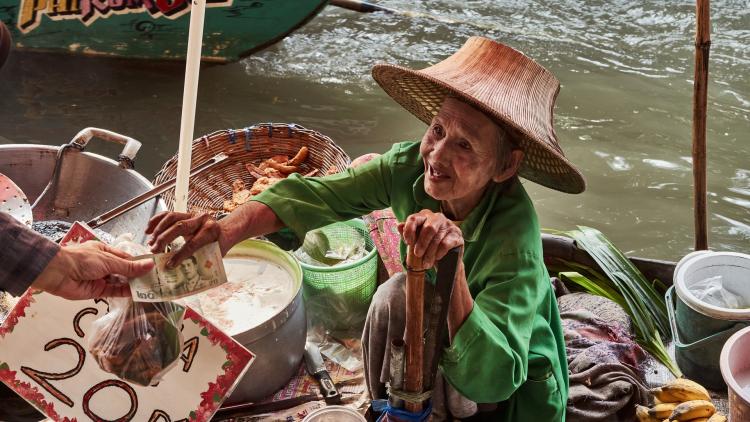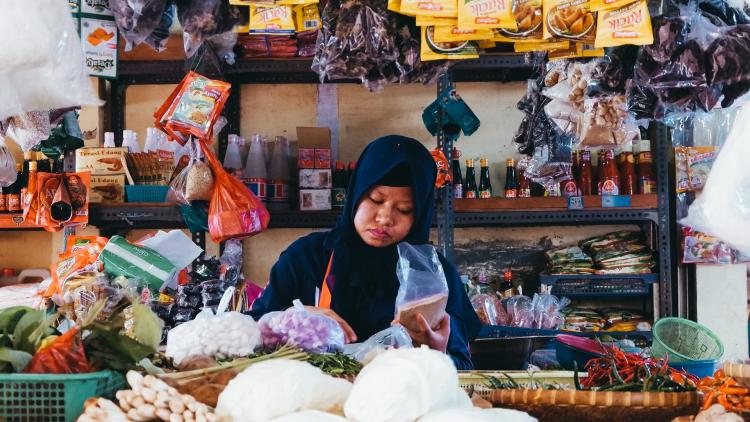Economic Development of Southeast Asia

Key information
- Status
- Module not running
- Module code
- 153401006
- FHEQ Level
- 6
- Credits
- 15
- Department
- Department of Economics
Module overview
Prerequisites
pre-requisites:
153400123 Macroeconomic Analysis
153400130 Microeconomic Analysis
Objectives and learning outcomes of the module
On successful completion of the course, students will be able to:
- Assess the colonial legacies and of other factors determining the post-1950 growth in the South East Asian economies;
- Critically evaluate the literature relating to growth and economic crises across the ASEAN region;
- Compare and contrast the policies adopted in different countries to accelerate industrialization and agricultural development;
- Understand the role of human capital in economic development and the challenges facing education systems and labour markets across the region;
- Analyse the challenges of environmental change and natural resource depletion and assess policies aimed at aligning economic development with environmental sustainability;
- Understand the role of the financial sector in economic development and its contributions to growth and crises in Southeast Asia;
- Analyse trends in income distribution and poverty eradication and the efficacy of poverty alleviation policies;
- Analyse the evolution of regional trade and investment linkages and evaluate the opportunities and challenges associated to the development of the ASEAN Economic Community.
Workload
Two hour lecture and one hour seminar, each week.
Scope and syllabus
Week 1 Economic Development of Southeast Asian Countries in Comparative Perspective
Week 2 The Influence of Colonialism on the Economic and Social Development of Southeast Asian Countries
Week 3 Industrial Policy and the Role of Government
Week 4 Agricultural Development
Week 5 Regional Trade and Investment Linkages
Week 6 Financial Sector Development and its Contributions to Growth and Crises
Week 7 Education, Labour Markets and Human Resource Development
Week 8 Trends in Income Distribution and Poverty Eradication
Week 9 Environmental Change and Natural Resource Depletion
Week 10 The ASEAN Economic Community
Method of assessment
Exam (80%) and one 2,500-word Essay (20%)
Suggested reading
Core Reading:
ADB (2017): Asian Development Outlook 2017: Transcending the Middle-Income Challenge, Manila: Asian Development Bank (https://www.adb.org/sites/default/files/publication/237761/ado-2017.pdf).
Ariff, M. and H. Hill (1985): Export-Oriented Industrialisation: The ASEAN Experience, Sydney: Allen & Unwin (https://library.soas.ac.uk/Record/309889).
Booth, A. (2016): Economic Change in Modern Indonesia. Colonial and Post-colonial Comparisons, Cambridge: Cambridge University Press (https://library.soas.ac.uk/Record/10012858).
Coxhead, I. (ed., 2015): The Routledge Handbook of Southeast Asian Economics, Routledge (https://library.soas.ac.uk/Record/10051542).
Chia, S.Y. and M.G. Plummer (2015): “ASEAN’s International Trade and Foreign Direct Investment, Commercial Policy Reforms and Production Networks”, Chapter 3 in: ASEAN Economic Cooperation and Integration Progress. Challenges and Future Directions, Cambridge: Cambridge University Press (https://library.soas.ac.uk/Record/10001576).
Gill, I. and H. Kharas (2007): An East Asian Renaissance: Ideas for Economic Growth, The World Bank, Washington, DC (http://siteresources.worldbank.org/INTEASTASIAPACIFIC/Resources/226262-1158536715202/EA_Renaissance_full.pdf).
Hill, H. (ed., 2002): The Economic Development of Southeast Asia, Volumes 1-3, Cheltenham: Edward Elgar (https://library.soas.ac.uk/Record/548274).
Jomo, K.S. (2004): After the Storm: Crisis, Recovery and Sustaining Development in Four Asian Economies, Singapore: Singapore University Press (https://library.soas.ac.uk/Record/653264).
UNESCAP (2016): Transformations for Sustainable Development: Promoting Environmental Sustainability in Asia and the Pacific, Bangkok: UN Economic and Social Commission for Asia and the Pacific (www.unescap.org/resources/transformations-sustainable-development-promoting-environmental-sustainability-asia-and).
World Bank (1993): The East Asian Miracle: Economic Growth and Public Policy, Oxford University Press, Oxford, chapter 1 (http://www-wds.worldbank.org/external/default/WDSContentServer/WDSP/IB/1993/09/01/000009265_3970716142516/Rendered/PDF/multi_page.pdf).
Additional Reading:
Akamatsu, K. (1962): “A Historical Pattern of Economic Growth in Developing Countries”, The Developing Economies 1, 3–25 (http://www.ide.go.jp/English/Publish/Periodicals/De/backnumber.html).
Akhand, H. and K. Gupta (2005): Economic Development in Pacific Asia, London: Routledge (https://library.soas.ac.uk/Record/657449).
Aoki, M., H.-K. Kim and M. Okuno-Fujiwara (1997): The Role of Government in East Asian Economic Development. Oxford: Clarendon Press (https://library.soas.ac.uk/Record/106598).
Bercuson, K. (1995): “Singapore: A Case Study in Rapid Development”, IMF Occasional Paper No. 119, Washington, DC: International Monetary Fund (https://library.soas.ac.uk/Record/319575).
Booth, A. (1999): “Initial Conditions and Miraculous Growth: Why is South East Asia Different from Taiwan and South Korea?”, World Development 27 (2), 301–321.
Campos, J.E. and H.L. Root (1996): The Key to the Asian Miracle, Washington, DC: Brookings Institute (https://library.soas.ac.uk/Record/135098).
Chang, H.-J. (2006): The East Asian Development Experience: The Miracle, the Crisis and the Future, London: Zed Books (https://library.soas.ac.uk/Record/695835).
Collins, S.M. and Bosworth, B.P. (1996): “Economic Growth in East Asia: Accumulation versus Assimilation”, Brookings Papers on Economic Activity 2, 135–203 (https://www.brookings.edu/wp-content/uploads/1997/06/1996b_bpea_collins_bosworth_rodrik.pdf).
Felipe, J. (2009): “Sectoral Engines of Growth in Developing Asia”, Malaysian Journal of Economic Studies 46 (2), 107–133.
Fogel, R. (2009): “The Impact of the Asian Miracle on the Theory of Economic Growth”, NBER Working Paper No.14967, Cambridge, MA: National Bureau of Economic Research (http://www.nber.org/papers/w14967).
Haggard, S. (1990): Pathways from the Periphery, Ithaca, NY: Cornell University Press (https://library.soas.ac.uk/Record/132024).
Hayter, R. and D.W. Edgington (2004): “Flying Geese in Asia: The Impact of Japanese MNCs as a Source of Industrial Learning”, Tijdschrift voor Economische en Sociale Geografie 95 (1), 3–26 (http://www.u.arizona.edu/~coonan/POL464/HayterandEdington2004.pdf).
Hill, H. (1990): “Foreign Investment and East Asian Economic Development: A Survey”, Asian-Pacific Economic Literature 4 (2), 21–58. (Reprinted in Hal Hill (ed., 2002): The Economic Development of Southeast Asia, Volume 3, Section C, Cheltenham: Edward Elgar, https://library.soas.ac.uk/Record/548274.)
Huff, W.G. (1994): The Economic Growth of Singapore: Trade and Development in the Twentieth Century, Cambridge: Cambridge University Press (https://library.soas.ac.uk/Record/120170).
Ito, T. and A.O. Krueger (eds., 2000): The Role of Foreign Direct Investment in East Asian Economic Development (NBER-EASE Volume 9), Chicago, IL: University of Chicago Press (http://papers.nber.org/books/ito_00-2).
Kuchiki, A. (2007): “Industrial Policy in Asia”, IDE-JETRO Discussion Paper No.128, Tokyo: Institute of Developing Economies (http://www.ide.go.jp/English/Publish/Download/Dp/pdf/128.pdf).
Disclaimer
Important notice regarding changes to programmes and modules


